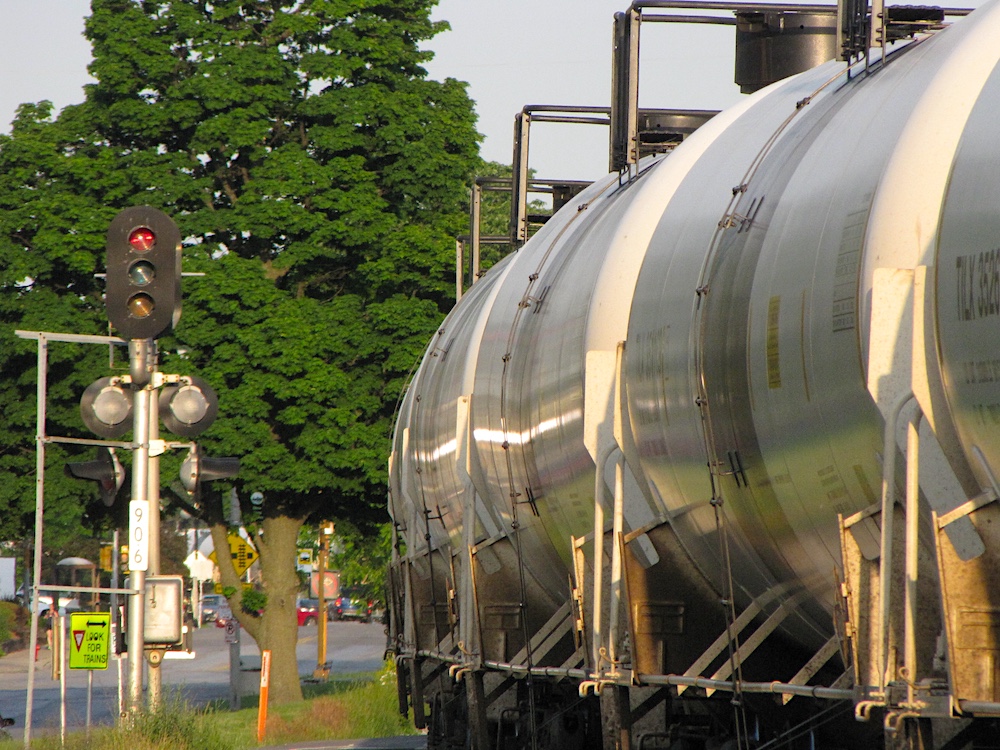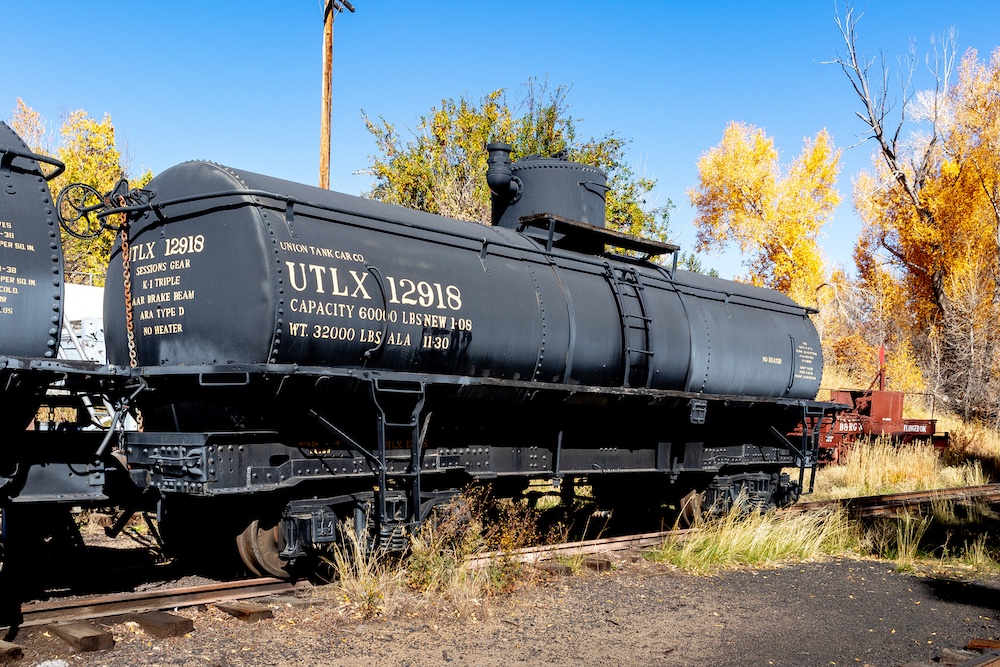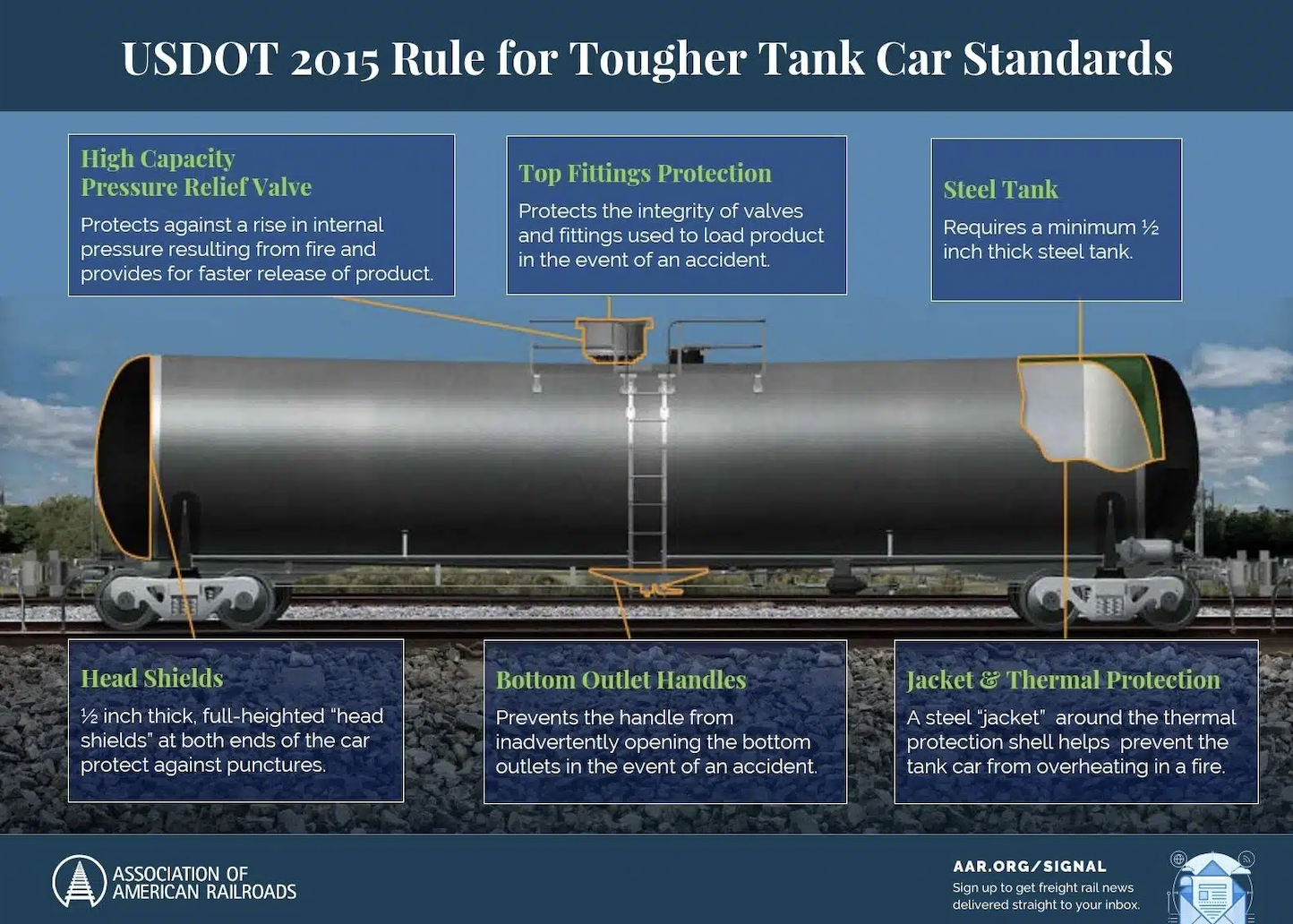
Tank car history traces back more than 150 years. Today, tens of thousands of tank cars are in service on North American railroads. They are used for various liquids and gasses, and their cargos include petroleum products, chemicals, and food-grade substances. Tank cars can be pressurized or non-pressurized, insulated or non-insulated, and — depending on the car type — can be used for multiple types of cargo or reserved for a specific one.
Tank cars are sometimes called “one-way” cars because they can be so highly specialized it’s difficult to find an appropriate load for their return trip. Most are owned by shippers or leasing companies rather than railroads. The reporting marks on these cars end with the letter “X” meaning the car’s owner is not a common carrier.
Here’s a brief look at the history of the under-appreciated, but absolutely vital tank car.
1865: Crude oil discovered in Pennsylvania led to the invention of the first tank car — three wooden tubs secured to a flatcar. A single cylindrical wooden tank, mounted horizontally, appeared soon afterward. It even had a dome to allow for product expansion. In addition to crude oil, early tank cars were also built to haul pickles in brine and even oysters packed in ice. However, the wooden tanks shared a common flaw — they were prone to leaking. In 1869, the Empire Transportation Co. designed a much superior riveted iron tank mounted on a wood underframe. Pre-1903: Most tank cars are made of iron or steel, in 6,000- to 8,000-gallon capacities and increasingly riding on steel underframes. Private tank car lines appeared in 1888.
1903: The first tank car construction standards are published by the Master Car Builders Association. The older designs become known as Class 1 cars. Existing Class 1 cars are allowed to continue in service with more stringent inspection requirements. The stronger new cars are called Class 2s.

1916: There are 50,000 tank cars in use, and the largest owner is Union Tank Line. A growing competitor, German American Car, owns 2,300 cars and, with World War I under way, changes its name to General American Tank Car. 1917: New rules mean that Class 1 and Class 2 cars with relatively weak 40 psi designs may be used only for nonhazardous cargoes. A new general-purpose specification, the 300-psi Class 3 is announced. The Class 4 rules for cars designed for hazardous shipments appear in 1918. Cars of this type are forge welded, not riveted.
1927: The Interstate Commerce Commission takes over tank car regulation. An increasing array of products require specialized car designs, and seven additional specifications are issued.
1940: Riveted tank cars are still authorized for construction, but the handwriting is on the wall. Within a year, eight new specifications will appear approving a variety of fusion-welded car designs. Riveted cars remain in service. 1942: There are 149,970 tank cars in North America, and 141,116 of them are privately owned. With the outbreak of World War II, 15,000 retired tank cars are pressed into service as part of a 70,000-car “pipeline on rails” hauling desperately needed petroleum products. 1954: The modern tank car era begins when Union introduced its frameless “HD” car. The car also lacks running boards and an expansion dome. By 1960, frameless and domeless cars were standard.
1970: Experimental tank cars of 50,000 and 60,000 gallons were built during the 1960s, but in 1970, the ICC rules that cars can’t exceed 34,500-gallon capacity. All tank cars built after 1971 are required to have shelf-type couplers.
2011: A tank car standard, called “enhanced Class-111”, is developed by the Association of American Railroads for use in transporting ethanol and petroleum crude oil. The new standard improved the car’s survivability in a train accident through the use of thicker steel in key areas and added protection for the top fittings. About 55,000 tank cars costing a total of $7 billion were built to this voluntary standard.
2014: New car production of the Class-117J and Class-120J tank cars begins, featuring greater strength and improved thermal protection and valves for the shipment of flammable liquids. In addition to newly delivered cars, shippers and railroads begin retrofitting as many as 128,000 older cars to meet the new standard, with an additional 26,000 cars expected to be retired. In 2015, the FAST Act established the Class-117 tank car as the minimum federal standard for use in flammable liquid service and setting dates for the phase-out of all Class-111 tank cars, including those built to the enhanced standard.

For more information, click Field Tank Car Guide from the AAR.














During a break from college, I worked in the Standard Oil refinery in Richmond, CA. One of my duties was unloading benzene tank cars. Benzene is a nasty chemical, but if everything works correctly, unloading a tank car doesn’t expose you to the chemical: you unscrew the large bulb that protects the tank car’s drain valve from damage during transit, screw on the drain pipe to the drain valve, and then open the drain valve. But, one day I nearly lost my sight in an accident. The shipper had not closed the drain valve before screwing on the protective bulb and loading the car. So when I climbed under the car to unload it, the protective bulb with its fine threads was holding back the 80 tons of benzene in the tank. I started to unscrew the bulb, and when it was down to the last few threads, the bulb blew off and a fire hose blast of benzene blew off my safety glasses and instantly blinded me. Fortunately, my shift foreman had stopped by to chat with me, and he instantly got me to a nearby eye wash station. The ambulance kept up the eye rinsing, as did the refinery clinic. And slowly, my vision returned. I’m thankful that the foreman had stopped by that day. Without his help, I don’t know if I would have blindly stumbled onto the eyewash station.